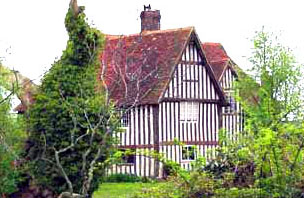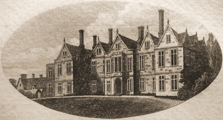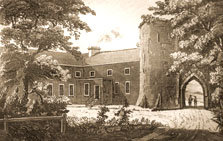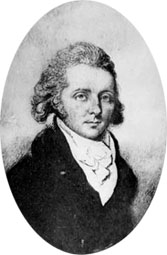The Woodgates

'Woodgates' at Chiddingstone Hoath photographed in 2007
The Woodgates were an important Tonbridge family in the 18th and 19th centuries.
Before then, according to Parish records, the family were in the Penshurst area in the late 14th century, and later in the Chiddingstone Hoath area, where they lived first in Truggers farmhouse and then in a house referred to as Stonewall but now named Woodgates. This
house is said to date from the mid-15th century and still stands, next to Stonewall Park.

'Summer-Hill' (now Somerhill), Tonbridge, in an early 19th century print. (THS Archives Z61/2)
The Woodgates came to Tonbridge itself in 1712, when John Woodgate (1664-1727) bought the house now known as Somerhill. He had 13 children, one of whom, Henry, inherited both Somerhill and Stonewall in 1728 and played a full part in public life; he promoted the Medway navigation scheme and left money for an organ in the parish church.
Since Henry was childless, he made his nephew William (1743-1809) his heir. William was the son of Henry's brother Francis (1706-90) who
had become a curate at Seal, married a local lady and was then given the living of Mountfield in Sussex by the Duke of Dorset.

'Tonbridge Castle, the seat of Major Woodgate', 1808. (THS Archives Z61/8)
William married Frances Hooker, built up a considerable fortune and bought the new house (built by his brother-in-law Thomas Hooker) attached to Tonbridge Castle in 1793 for his son William Francis (1770-1828) who was known as the Major. William Woodgate's participation in town life included sending his sons to Tonbridge School, serving as a magistrate, financing the new Town Hall in 1798 ( just north of the Big Bridge) and owning about a dozen properties in the town.

William Francis Woodgate
(THS 24.059)
After William died, William Francis moved to Somerhill and made improvements to it.
He had at least ten children, and one of his daughters married Dr Thomas Knox,
the headmaster of Tonbridge School.
During the threat of a Napoleonic invasion, William Francis commanded a troop of about 55 cavalry volunteers, as part of the West Kent Yeomanry, who were raised from among local inhabitants in 1794. His father had been one of three founders of the Tonbridge Bank in 1792 but in 1816 the Bank failed, bringing ruin to its backers. William Francis was forced to sell Somerhill.
Although Woodgates no longer lived in Somerhill after that date, another member of the family, Francis (1781-1843), returned to live in Tonbridge in 1823 when he bought Ferox Hall. With the large family of succeeding generations of Woodgates living in Sevenoaks, Seal, Pembury, Penshurst and further afield, the family features in many aspects of the locality's history throughout the whole of the 19th century.
The Woodgate family is one of the few Tonbridge families to have left a substantial archive of documents about its history. There is a copy of the detailed
History of the Woodgates of Stonewall Park and Somerhill in Kent by the Reverend Gordon Woodgate and G. M. G. Woodgate, printed privately in 1910, in Tonbridge Reference Library,
and another in the Tonbridge Historical Society's archives. It contains substantial quotations from the family papers, which are deposited in the Centre for Kentish Studies.
▲Top




